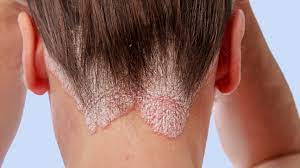What You Need to Know About Psoriasis

If you suspect you have psoriasis, your doctor may run blood tests and X-rays to rule out other conditions. A variety of treatment options are available for people suffering from psoriasis. Some treatments involve applying creams to the affected skin, while others involve exposure to ultraviolet light. Your doctor will recommend the treatment that best fits your individual needs. To learn more about psoriasis, please read on!
Symptoms
The causes of psoriasis are unknown, but it is thought that this skin disease is caused by damage to the immune system, enzymes, or substances that control the division of skin cells. When this happens, the immune system responds abnormally by causing inflammation and the rapid production of immature skin cells. In addition, white blood cells are activated and gather at the site of an infection or injury. They produce factors that help heal wounds, clot blood, and fight infection.
Skin plaques are typical psoriasis symptoms, which tend to be raised and red. These patches may bleed when scratched and can spread to cover large areas of the body. Sometimes, psoriasis plaques can also develop on the hair or nails. Nails may also become discolored or crumble in some cases. Psoriasis is one of the most common forms of the disease.
Treatments
The most common psoriasis treatments include topical corticosteroids, petroleum jelly, and thick creams. However, many people with psoriasis find these creams ineffective and should try a different product. While the exact mechanism of action is unclear, corticosteroids are believed to have immunosuppressive and anti-inflammatory effects. Psoriasis patients can benefit from topical tar treatments. Tar is widely available over the counter in various forms, including shampoos, lotions, ointments, and topical solutions.
Doctors can diagnose the disease by using a skin sample. This sample will help determine whether the patient has psoriasis or another condition. In addition to topical agents, doctors can prescribe ultraviolet light therapy in the office or at home. Ultraviolet light can aggravate the symptoms of psoriasis, so it is essential to use protective clothing and apply sunscreen. If the symptoms of psoriasis are severe, a physician may prescribe a systemic medication.
Triggers
If you have psoriasis, you've probably wondered what triggers the condition. Cold weather, dry indoor air, and little sunlight exacerbate your symptoms. The good news is that psoriasis can be managed and even prevented with a healthy diet that avoids trigger foods and drinks. In addition to avoiding trigger foods, you can also incorporate foods that improve your overall health, including fruit and vegetables and extra-virgin olive oil.
Infections can also cause psoriasis flare-ups. A cold or virus can trigger an outbreak. Vaccinations and insect bites can also cause an outbreak. And, of course, certain medications can aggravate the condition. While it may be difficult to pinpoint what causes psoriasis, here are some of the most common triggers. Keep reading to learn about what can trigger a flare-up.
Diagnosis
Diagnosis of psoriatic arthritis depends on the type and severity of the lesions. The skin and nails are the most common site for this disease, and their location determines its type and severity. Several severity scales are available to determine the disease's evolution and treatment response. A doctor may also order laboratory tests to check the presence of autoimmune factors. Ultimately, the diagnosis of psoriasis depends on the patient's symptoms and the severity of the disease.
Symptoms of psoriasis include pitting of the nails and skin. Psoriatic lesions in the nail matrix produce "parakeratotic foci" that slough off when exposed to the environment. Onycholysis and "oil drop" spots are other signs of psoriasis. Symptoms may vary but typically include red, sharply demarcated plaques on the skin. These lesions may be symmetrical or irregular in shape. They may be pruritic or painful. In some patients, the lesions may develop following injury or trauma.



